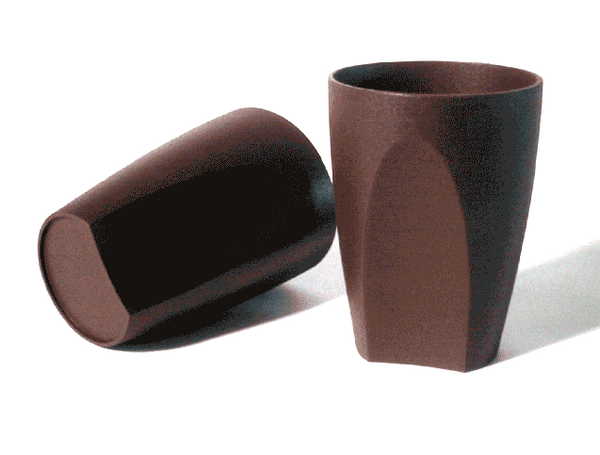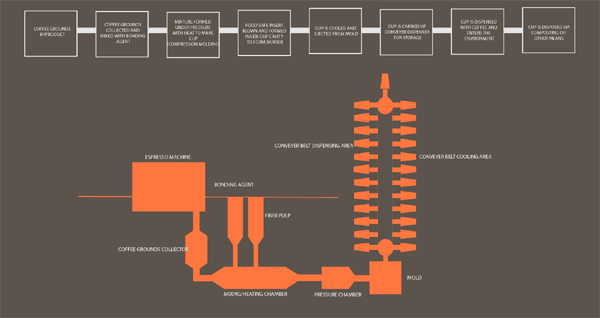作者:未知 来源:手冲咖啡: 咖啡用品 > 咖啡杯 > 2025-12-15 08:58:30
c2c coffee cup by saleem khattak from canada
designer's own words:
"
In a perfect world, we would not generate waste (i.e. landfill) or burn fuel unnecessarily (i.e. shipping), but utilize waste products locally in the perpetual circle of cradle-to-cradle consumption.
As an example, the design team chose the disposable paper cup; the ‘C2C’ coffee cup is manufactured at the cafe from the waste stream of the cafe.
Used coffee grounds are mixed with paper pulp and a polylactide resin (made from corn derived dextrose), then pressure-molded into shape. C2C is dried and cooled whilst being transported to the place of usage or storage.
The physical design itself originated from the wish of providing not only a directional feature to the cup, but also to provide a friendlier shape and more secure grip for weaker hands. When using a lid - through thoughtful placement - the user will always know where the drinking opening is.
C2C is fully biodegradable with its final elements being 100% compostable.
Manufacturing of C2C provides for an animated feature in the cafe, since most of the process will be visible.
The C2C-Maker would be an under-counter or behind-counter installation, with parts of the machinery being visible and/or exposed; typically, the mold/forming/cooling "tree" would be above counter level.
It would be perfect, if the grounds used for "your" drink would make up "your" cup. However, "your" cup grounds content will actually be from someone else's brew, since there will be a certain cycle delay, when taking mixing, forming, drying, and cooling into consideration. But technically, one brew makes its own cup.
If every cafe has a C2C-Maker, we estimate that the grounds content of C2C will be around 15%, with the remaining 85% being pulp filler and polylactide resin. If the machinery is only installed in high-profile cafes, coffee grounds from other locations may be brought in and utilized, allowing for an estimated 90-95% of the C2C to be coffee grounds; the polylactide resin will then only be required as a binder and sealer.



2015-10-29 19:26:57 责任编辑:未知
常见的咖啡产区
非洲产区
埃塞俄比亚咖啡- 耶加雪菲咖啡- 西达摩咖啡- (耶加雪菲水洗和日晒)-
肯尼亚咖啡- 卢旺达咖啡- 坦桑尼亚咖啡-亚洲产区
美洲产区
中美洲产区
本站推荐: 卡蒂姆咖啡豆| 季风马拉巴咖啡| 牙买加咖啡| 西达摩花魁| 耶加雪啡咖啡| 埃塞俄比亚咖啡| 耶加雪菲咖啡| 巴西黄波旁咖啡| 巴拿马水洗花蝴蝶| 尼加拉瓜马拉卡杜拉咖啡豆| 罗布斯塔咖啡豆特点| 阿拉比卡咖啡豆的特点| 巴西摩吉安纳咖啡| 巴西咖啡豆风味特点| 乌干达咖啡豆风味| 西达摩咖啡豆特点| 后谷咖啡云南小粒咖啡| 埃塞俄比亚红樱桃咖啡| 哥斯达黎加塔拉珠咖啡| 单品摩卡咖啡豆的特点| 卢旺达单品咖啡| 布隆迪咖啡风味| 哥斯达黎加咖啡黑蜜口感| 巴拿马卡杜拉咖啡| 巴西喜拉多咖啡特点|
专业咖啡知识交流 更多咖啡豆资讯 请关注咖啡工房(微信公众号cafe_style)

